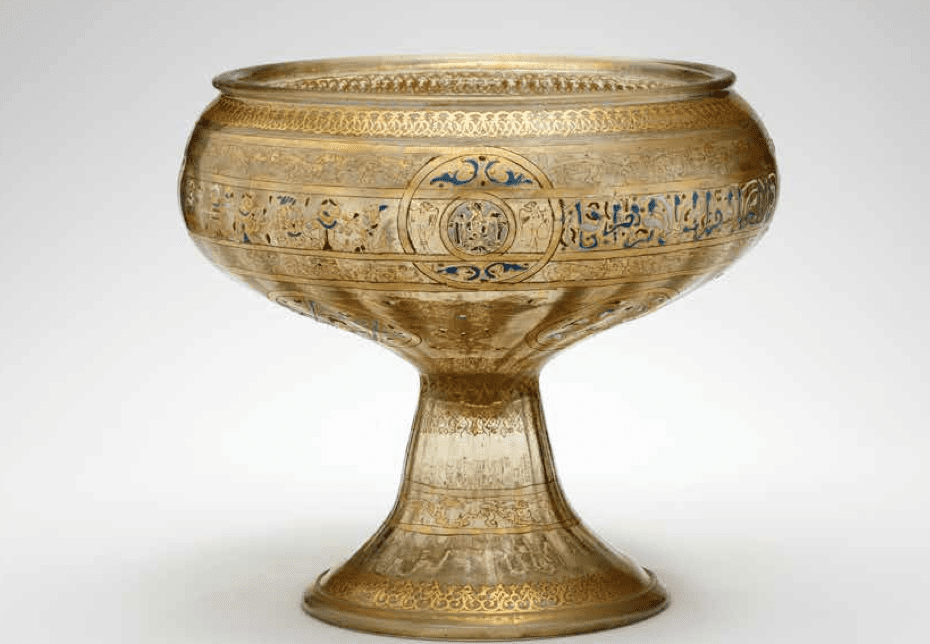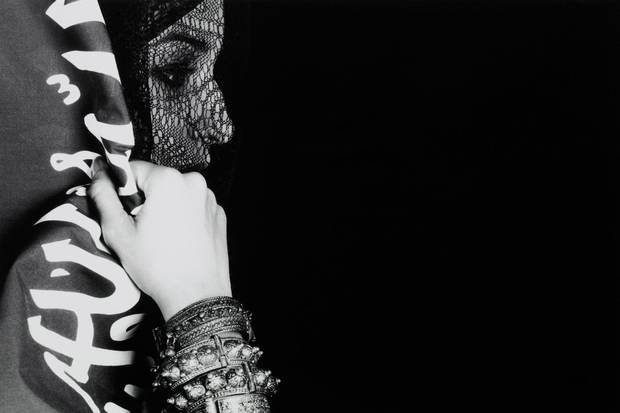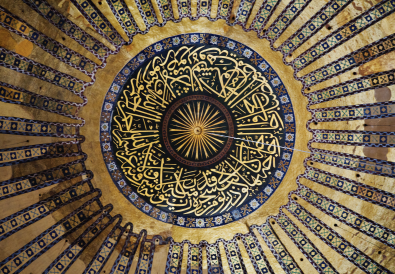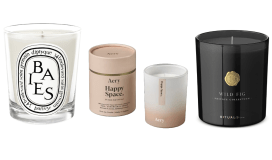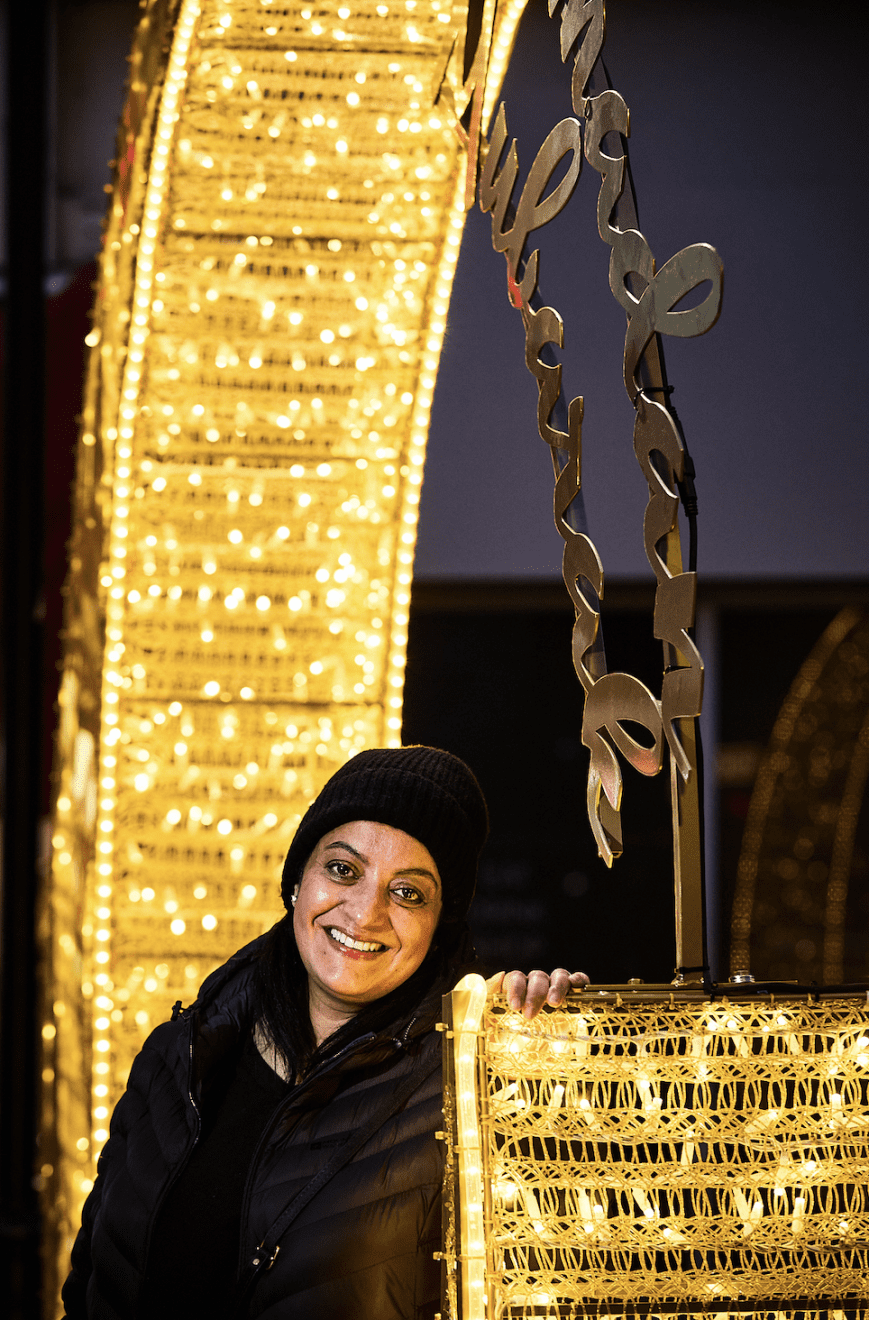The Syrian footed bowl with bits of gold is known as a Tazza and is formed of a colourless yellow glass, with enamels ranging from; blue, red, yellow, black and green. The glass body itself contains a few large bubbles and numerous tiny bubbles; typically not much attention was invested in refining the enamel glass as it was to be densely decorated, thus the yellowish colour. To form the top bowl shape, the hot mass of glass is blown with an instrument.
The foot was made in a similar manner and adjoined separately. A chain of golddecorative festoon patterns are noticed at the rim of the bowl, at the base of the foot and at the join of the foot and the base.
The top globular bowl is decorated with two bands of quadrupeds, separated by a larger central register, which alternately depicts figures and inscriptions of a couplet in Naskhi script. These bands are intersected by circular medallions containing an encircled image of a black eagle in the forefront, against a white background, and sketchy birds on the right and left sides.
Circular medallions are also found on the underside of the bowl; two of which depict a star with six points; alternating those with of dense pseudo-vegetal arrangements. Even though, tragically, the lid of the Syrian bowl is missing, this does not depreciate its magnificence and it is indeed an extraordinary object. The date of production is the mid-thirteenth century, under the rule of the Bahri Mamluks, and belongs to the Raqqa group of objects.
It was in Syria that the technique of enamelling and gilding glass developed and such items were popular produce of the late Ayyubid and early Bahri Mamluk period.
The subtle use of colours, the dominating use of gold, combined with the detailed decoration, reflects typical characteristics of this era. This illustration of an eagle is prevalent through Mamluk heraldry but its significance is unknown.
The emblem of an eagle with birds on each side is associated with Baraka Khan (r.1277-1279) due to its similarities with a manuscript from the reign of Baybars, suggesting that it bears little significance and is merely a transmitted tradition found in an early fourteenth century manuscript too.
Furthermore, the association between the poetic inscription and the object is unclear. The poem compares the beloved’s face with the full moon and describes its slender figure. Research fails to outline the purpose of this object; was it used for wine drinking?
This would be an attempt to explain the latter part of the inscription as the intoxicating beverage would make the beloved’s figure appear slender. None of these suggestions, however, is backed up with evidence, and the purpose of the bowl and the owner still remain ambiguous.
To read more – Buy our Spring issue HERE
Natasha Syed is the dynamic Editor-in-Chief of British Muslim Magazine, the UK’s premium Travel & Lifestyle publication catering to Muslim audiences. With a passion for storytelling and a keen eye for celebrating diverse cultures, she leads the magazine in curating inspiring content that bridges heritage, modern luxury, and faith-driven experiences.
Under her leadership, British Muslim Magazine continues to set the standard for authentic, and engaging trusted narratives, making it the go-to source for Muslim traveler's and lifestyle enthusiasts across the UK and beyond.


